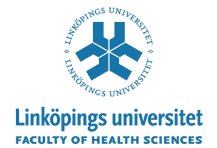 |
Visa svensk kursplan |
|
COURSE CATEGORY Single subject course MAIN FIELD OF STUDY Medical Biology SUBJECT AREA Medical Biology |
COURSE CODE | 8FA223 |
LEARNING OUTCOMES
By the end of the course the students will be able to:
Knowledge and understanding
- Describe the mode of action of different microorganisms pathogenic to humans
- Define the interactions between the human host and the infectious agent, from molecular to
clinical level and apply this knowledge to describe clinical manifestations
- Apply the principles of mode of actions of virulence factors on the defence of the human body
Competence and skills
- Design and carry out laboratory experiments to investigate molecular mechanisms in
the interactions between microorganisms and human cells
Judgement and approach
- Understand, analyze and critically discuss scientific papers in the field of infection biology
- The host response to infectious micro organisms
- Virulence strategies and mechanisms exerted by the pathogenic micro organism
- The ecology of human flora of microorganisms - normal flora and pathogens
- Microorganisms and the immune system
- Vaccines and vaccine development
- Antimicrobial agents and resistance to them
- Epidemiology of human infectious diseases
- Zoonosis
- Infectious diseases in the perspective of global medicine
- Emerging infectious diseases
- Infections and human genetics
Specific: In this course lectures, tutorial groups, seminars, study visits, demonstrations and laboratory work are used.
Active participation in the compulsory parts is necessary to pass the course, and assessment of them is carried out continuously. Compulsory parts in this course are: tutorial groups, laboratory work, and demonstrations.
EXAMINATION
Individual written examination.
Literature assignment including a written report and oral presentation of an in-depth study (group assignment with individual assessment).
SCOPE OF RE-EXAMINATION
The extent of a re−examination shall be similar to the regular examination.
CHANGE OF EXAMINERS
Students who have failed the course or part of the course twice are entitled to request another examiner for the following examination occasion, unless specific reasons are present.
REGISTRATION FOR EXAMINATION
The procedure for registration should be stated prior to the commencement of each course. In other respects, regulations concerning examination and examiners are applied in accordance with Linköping University policy.
Applicants must also have documented knowledge of English equivalent to Engelska B/Engelska 6; i.e. an internationally recognized test, e.g. TOEFL (minimum scores: Paper based 575 + TWE-score 4.5, and internet-based: Score of 20 (scale 0-30) in written test, total score of 90), IELTS, academic (minimum score: Overall mark of 6.5 and no section below 5.5), or equivalent.
The course is carried out in such a way that both men’s and women’s experience and knowledge is made visible and developed.
If the course is withdrawn, or is subject to major changes, examinations according to this course plan are normally offered on a total of three occasions within one year, one of them in close connection to the first examination.
|
||||||||||||||||||||||||||||||||||||||||||||||||||||||||||||||||||||||||||||||